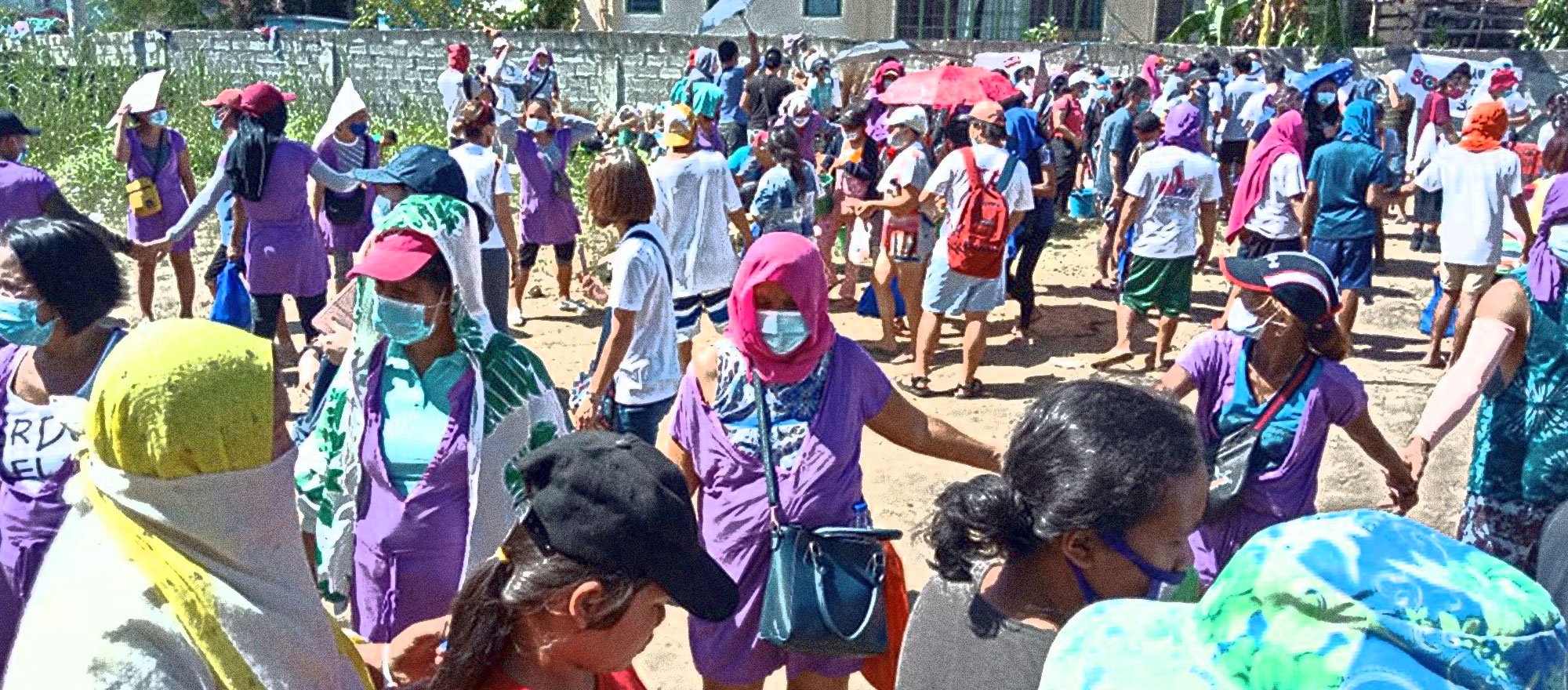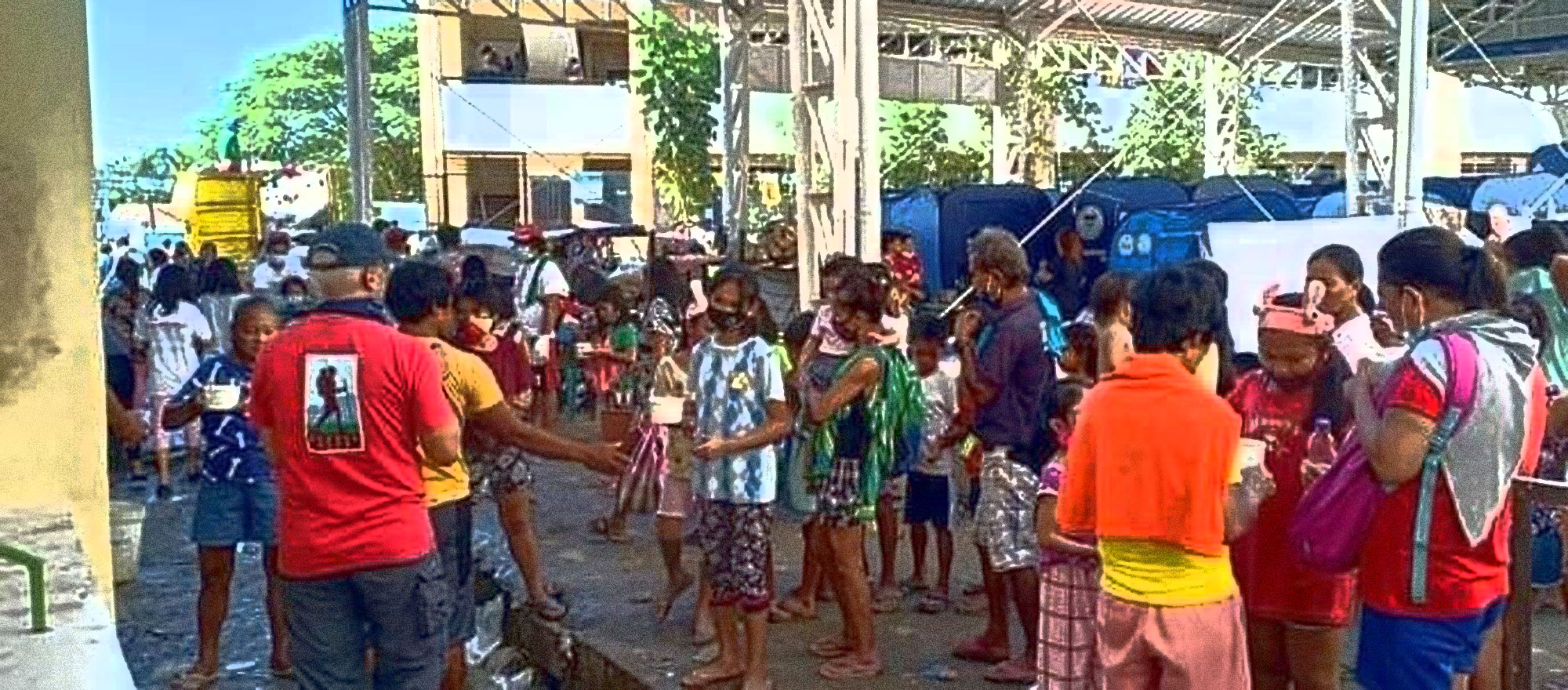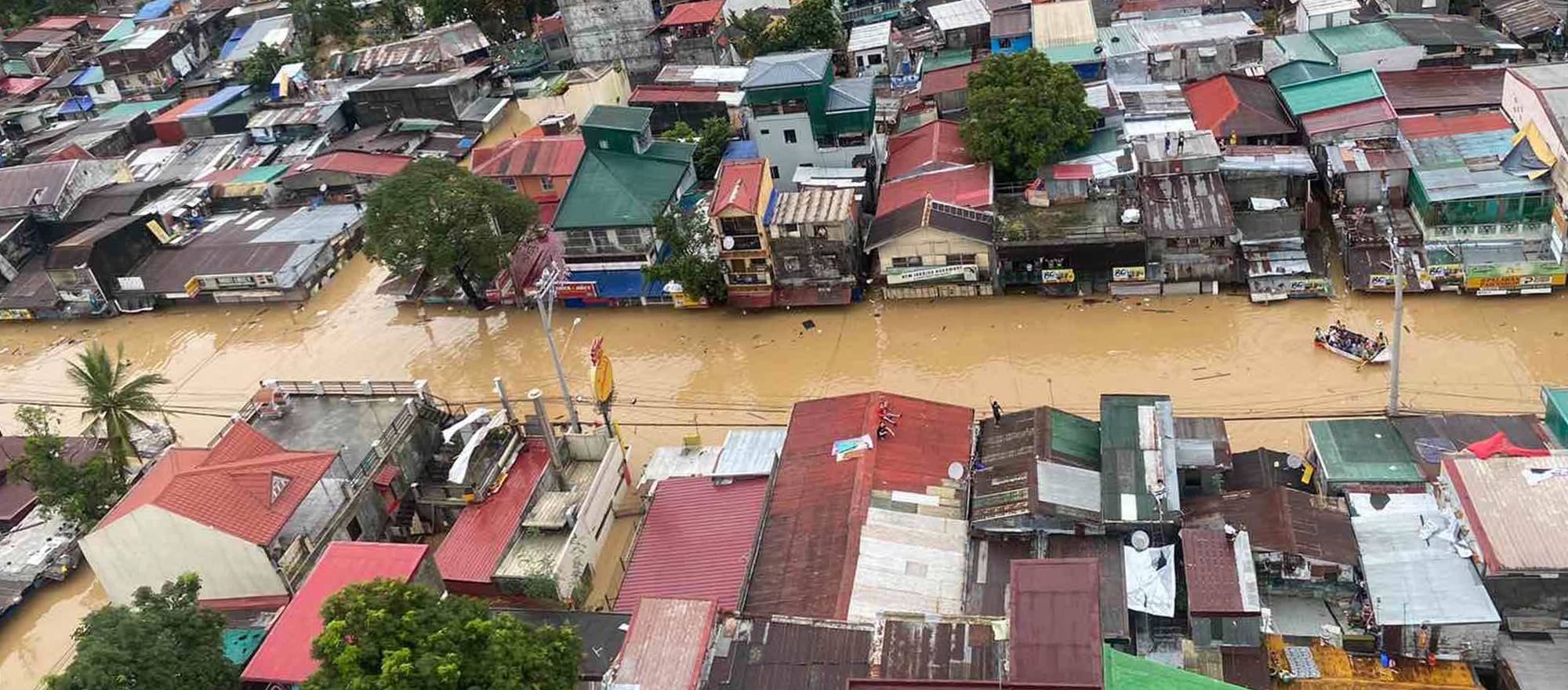Between routine and rupture: Notes on the student strike
Support the student strike. Let all academic institutions pause from regular programming in order to collectively teach each other the most important and urgent lessons right now.
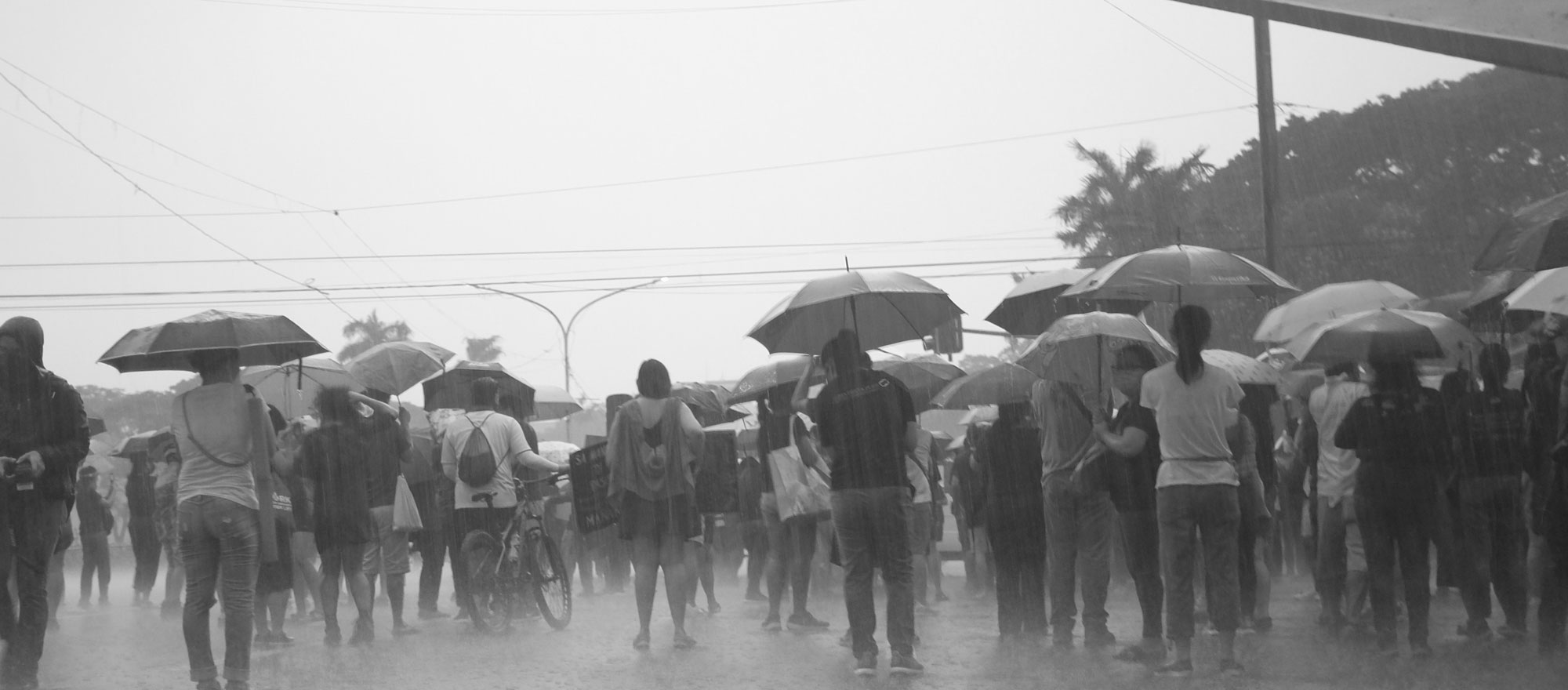
On any given day, we are living out a certain narrative, the narrative of business as usual. Many times we feel in our gut that all is not truly well, but we continue to perform the narrative anyway. These tensions stew, and on some days, they boil over. Then we realize: this narrative can’t proceed as usual.
![]() We see this tipping point in many forms. A lover’s quarrel. A family meeting. A company assembly. The quarrel might end in a breakup, the meeting with broken plates, the assembly with a picket; the outcomes may vary, but always there is a stake. These interventions are part of the check and balance of any given order, precisely because we have a stake in that order.
We see this tipping point in many forms. A lover’s quarrel. A family meeting. A company assembly. The quarrel might end in a breakup, the meeting with broken plates, the assembly with a picket; the outcomes may vary, but always there is a stake. These interventions are part of the check and balance of any given order, precisely because we have a stake in that order.
Sure, sometimes that break is an introspective weekend, or that narrative adjustment is threshed out in the pages of a journal. But there are moments in our lives when we see our personal stories grow so tightly interwoven that they become social stories. Sometimes the quarrel springs from our collective relationship with a beloved public figure, and we have to have that family meeting as a society.
At these points, we recognize our need to pause for an urgent and necessary dialogue without which we cannot move forward. The stakes are raised, and with it, the form of our actions. In this way, a strike can be understood as a form of storytelling—and storymaking. Often we call it a much more boring word: history.
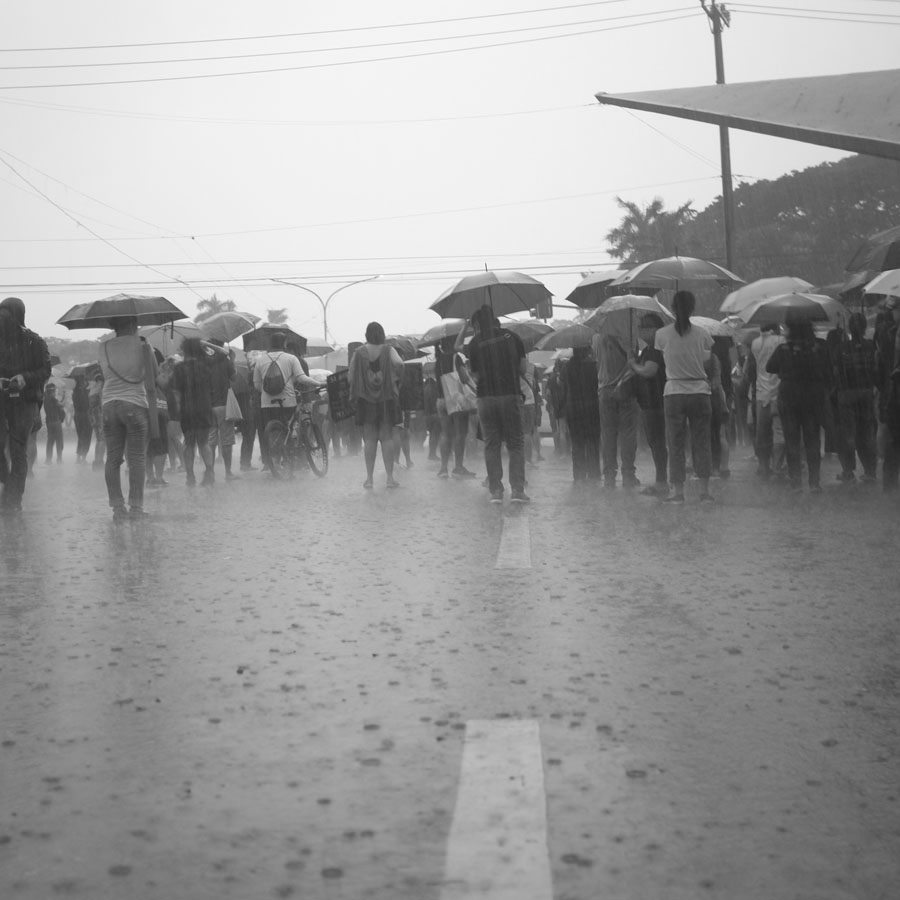
The need for a break
The recent declarations of strikes by the Ateneo, De La Salle, and UP students demand our understanding from this perspective. Perhaps for many of us, reading the fiery petitions, we only see ungrateful brats, entitled demands, ruined schedules, more stress that we didn’t ask for.
Clearly, however, given our current situation, we are not incapable of understanding these strikes. If we can grasp that the point of a classroom is to transcend it, if we can grasp that the home can be a school (and vice versa), if we can grasp that not being together is an extreme measure for staying together, then perhaps we can also understand the student strike’s seemingly contradictory proposition: that stopping classes is a way of expanding them.
Even before the shift to online learning, students were already being left behind by increasingly inaccessible tuition and the favoring of courses geared toward labor export. Now, in the context of the pandemic, it becomes even more exclusive. How many homes can boast of devices, connectivity, a relatively peaceful domestic situation, enough learning space for each child, and the luxury of hands-on parental assistance?
Not to mention the immense burden on teachers and administrators who, despite facing similar logistical constraints as their students, are expected to hurdle these better and quickly adapt their curricula to the new platforms—on top of caring for their imperiled households. Did we really think that we can make this immense paradigm shift of physical to virtual, synchronous to asynchronous, without stopping to question its merits, feasibility, and impact?
All this, compounded with ever-shifting pandemic protocols, typhoons, and an uncaring national government that has left each learner and teacher to fend for themselves. Amid death, rain, financial ruin, and state neglect, are we really expecting everyone to just proceed with coursework as if all is well? What extreme level of resilience are we expecting of the educational community?
The strike is a historical inevitability. If any, it acknowledges that there is a limit not to what we can, but what we must endure. We must discern between adversity and sheer torture.
View this post on Instagram
The point of an education
The loss of physical classrooms has brought into question the role of schools and universities in national life. What is the value of a school beyond its physical facilities? What is knowledge and how do we arrive at it when the hallowed halls are removed from the equation?
More importantly, in view of the students’ demands, they also problematize not just the form of instruction, but also the point of it. What use is the knowledge generated by our esteemed universities, when they are not heeded—even downright ignored—by our policymakers? What use is adhering to school rules and understanding the laws of our land, when our leaders continue to act with brazen and remorseless impunity? What use is studying the mysteries of faith and corporeality when our government is all too willing to kill, if not through Tokhang, then by neglect?
Our students do not live in a vacuum. Let us pause to consider the world from their eyes. They see an IATF that is not steered by medical experts. A DSWD that is not led by a social worker. A DENR that is not led by an environmentalist. A National Library not led by a librarian. Media outfits and their workers are harassed for doing their jobs. Climate and disaster risk agencies are either shut down, underfunded, or headed by yet another former general. How can our students be motivated to pursue professional practice in their respective fields, when credentials and competence are wantonly sideswiped in favor of unqualified stooges?
We should know better, we who have been around to see the signs and patterns more clearly. As our youth reel from Ulysses and Rolly, we remember Yolanda, Pablo, Sendong, Pepeng, and how little we have done despite the clear pattern. The Philippines is the country at greatest risk of climate crisis, yet we have stood by as our government underfunded PAG-ASA, shuttered Project NOAH, allowed large-scale mining, railroaded dam construction, and dumped dolomite on Manila Bay. The natural hazards may pummel our shores, but the disaster is not in the flood. It is our country’s inability to prepare, mitigate, or resist.
In the face of this pandemic, our government has failed to provide mass testing, sufficient aid, or even just basic communication from the President. Our health and social services budgets are dwindling, our debt skyrocketing faster than in the Marcos era, our precious PhilHealth funds poached, our civilian institutions crumbled, our safety nets gone. We are being robbed, point blank, in broad daylight.
Many times we have nearly reached the boiling point of #OustDuterte, but then we let that feeling simmer and become part of our “new normal.” Resilient as we are, trained by centuries of enduring the microaggressions of history, we Filipinos acclimate quickly. 11-11 deal on injustice? Add to cart.

Our tolerance for abuse
Perhaps we hold on to that rosy, traditional view of education that our colonizers gifted to us: that diplomas are the passport to a distant mirage of prosperity, that grades are the measure of a child’s worth, that learning is sitting in a classroom and being shielded from outside realities.
Have we been too preoccupied with preparing our students for employment, that we have lost sight of their need to survive? Think about it: isolation, the rule of fear and the constant threat of violence, control of our finances and actions, being told what to think and who to associate with, the deprivation of sufficient medical care and nutrition. Is our insistence on uninterrupted schooling truly about learning and intellectual inquiry, or is it just how we deal with the symptoms of chronic abuse?
Maybe we have hardened ourselves to cope with adulthood by swallowing the injustices we live in. Our students haven’t—and perhaps, shouldn’t.
Learn from the youth
To support a strike does not necessarily mean agreeing to every letter of a petition. A strike, after all, is a tremendous wager not everyone may be prepared to make, logistically, ideologically, or strategically. Neither is it a fixed thing, as a strike’s demands and methods also evolve as the situation develops.
Nonetheless, to support is to recognize the issue and its dispute as valid. It means that you uphold the right of the strikers to be seen and heard, that they are people with a valid stake in the conversation. It is a commitment to listen. Genuine listening sometimes entails withholding our own opinions or suspending our presuppositions; the point is that we listen in order for the conversation to continue, refine, prosper, and hopefully, resolve.
As with any dialogic learning environment, it is not only students who are getting an education: teachers, staff, students, community members, we all have something to learn from each other. Always, there is a way to navigate the contradictions we live in: by seeing the unity in the perceived clash, the revelation in the disaster, the opportunity in the rupture.
Support the student strike. Let academic institutions pause from regular programming in order to collectively teach each other the most important and urgent lessons right now: Huwag kunsintihin ang katiwalian. Pahalagahan ang buhay. Labanan ang abuso. Oust Duterte!

